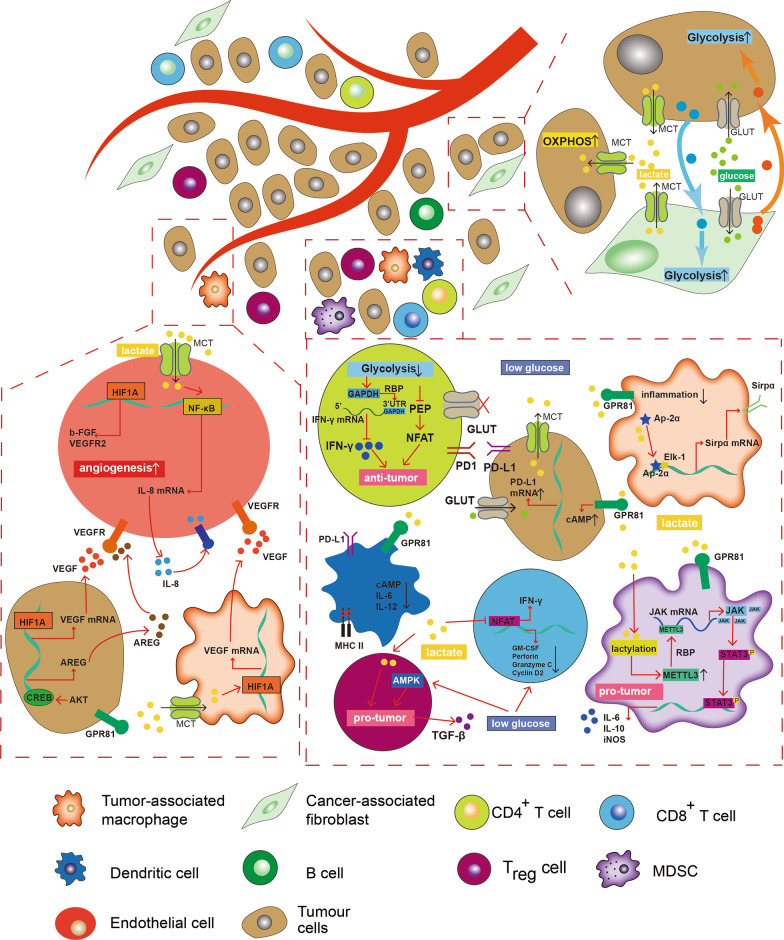Fig. 3.
Glycolytic metabolism remodels tumor microenvironment. Lactate can promote tumor cells and tumor-associated macrophages (TAMs) to secret a series of factors to support angiogenesis. Endothelial cells can also sense the extracellular lactate level to promote their proliferation. Glucose deprivation and extracellular acidosis significantly suppresses the anti-tumor function of macrophages, CD4+ T cells, CD8+ T cells and dendritic cells (DCs) while has little influence on immunosuppressive cells such as myeloid-derived suppressor cells (MDSCs) and regulatory T cells (Tregs). Carcinoma-associated fibroblasts (CAFs) and cancer cells can promote the glycolytic levels of each other. Additionally, a part of tumor cells can uptake lactate and display oxidative metabolism, also known as “the reverse Warburg effect.” Arrows indicate positive modulations or transitions, while blunt ends indicate negative modulations

